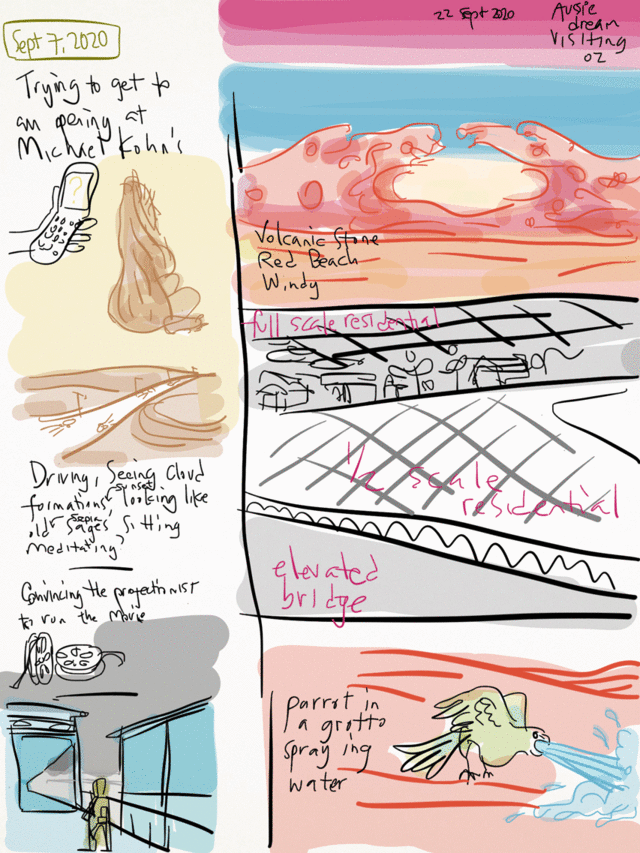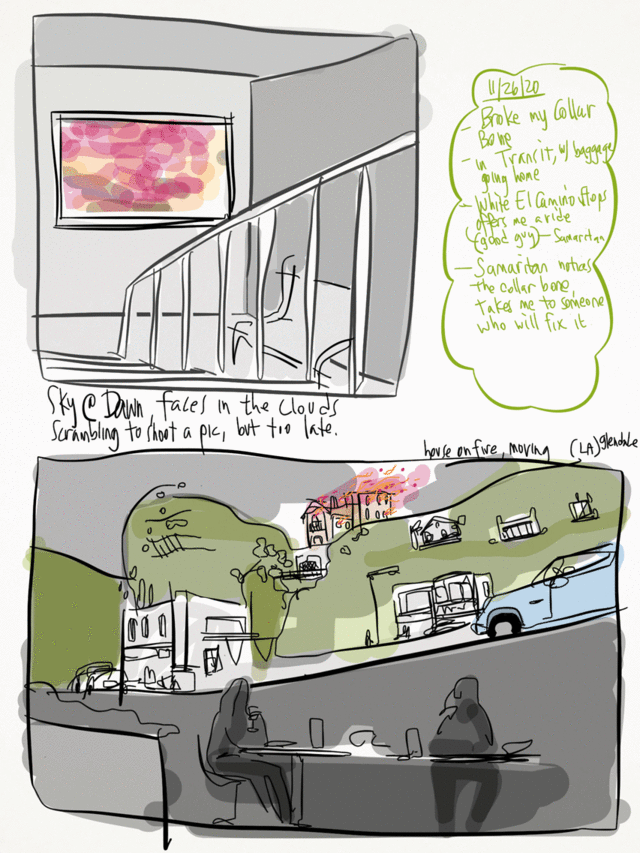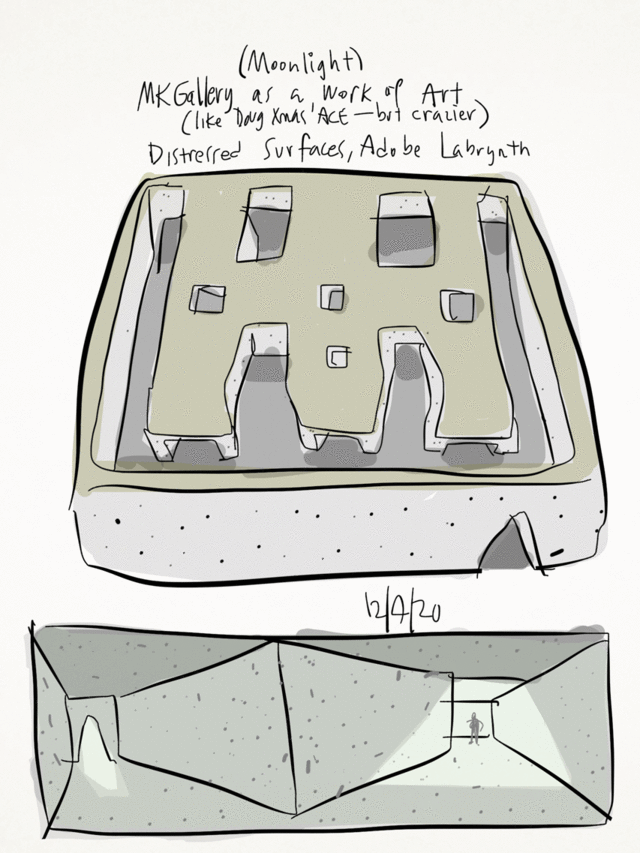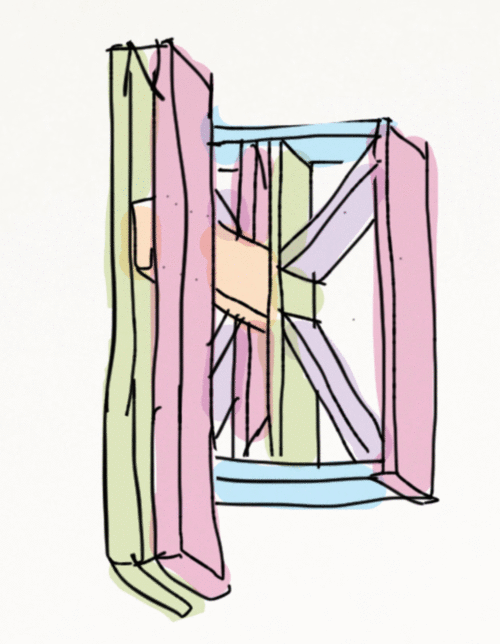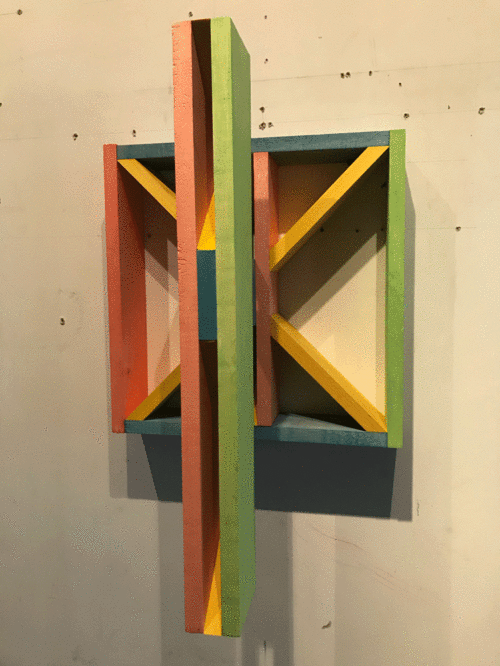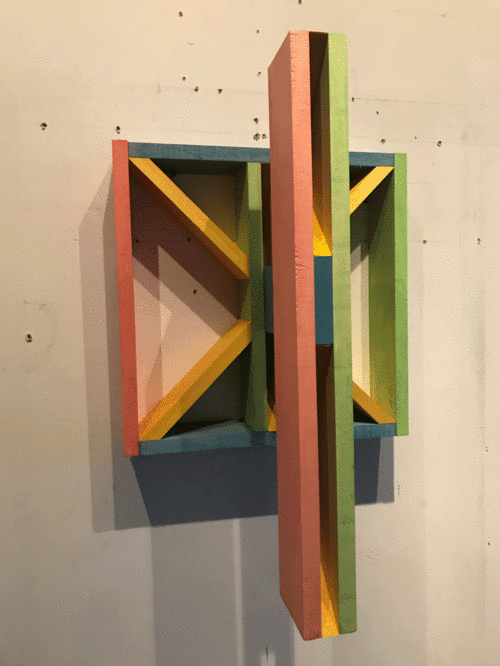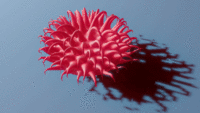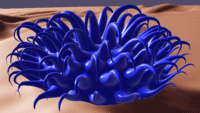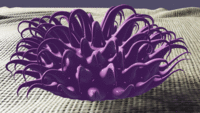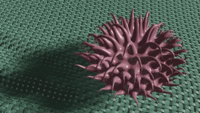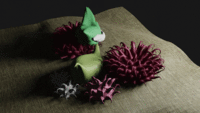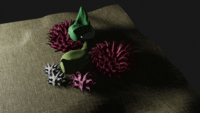December 5, 2020
"I have dreams"
A snip of dialog from the 1974 movie Zardoz, created and directed by John Boorman. Consuela is a leading member of an elite class called Eternals. In this future, they have achieved immortality and arrogated this and all scientific advancement in small hamlets protected by force field bubbles. The Tabernacle is what we today would call Artificial Intelligence, the operating system of the society of the Eternals. They communicate with the Tabernacle via their rings, kind of like our interlocution with Siri or Alexa today. Zed is a brutal, part of the outcast population left to fend for themselves in a destroyed earth.(*) At this moment in the action, Zed was kept in a cage like an animal:Consuella: [speaking into her ring as she observes Zed asleep in his cage] The Brutal is now in fourth hour of unconscious sleep. It's astonishing that Homo Sapiens spends so much time in this vulnerable condition at the mercy of its enemies. Is there any data on the sleeping-patterns of primitive people?
The Tabernacle: Is that a priority request?
Consuella: Yes. I am now going to test its waking response to dangerous stimuli.
[She reaches inside the cage toward Zed. With unexpected speed, he seizes her wrist even as he wakes. He holds her for a moment, glaring at her before releasing her. Slowly, she recovers composure and speaks to him]
Consuella: Does it please you to sleep?
Zed: Yes.
Consuella: Why?
Zed: I have dreams.
The Tabernacle: Sleep was necessary for Man when his waking and unconscious lives were separated. As Eternals achieved total consciousness, sleep became obsolete, and Second-Level meditation took its place. Sleep was closely connected with death.
Sometimes, I awake in the morning in the thrall of a vivid dream. I immediately flip open my iPad and record it as best I can as it dissipates into oblivion. Here are a few of them:
(* Spoiler Alert under the fold)
The Spoiler:
Unknown to Consuela, another Eternal, Arthur Frane, had executed an assigned chore out of sight of the Vortex (the Eternal's community) with an artist's imagination. Frane had bred several generations of a priestly class whose responsibility was to cull the herd of the Brutals. Zed was dismissed as no more than a beast by the Eternals when instead he was another step ahead of them in evolutionary terms.
December 4, 2020
Blender: Properties of Materials
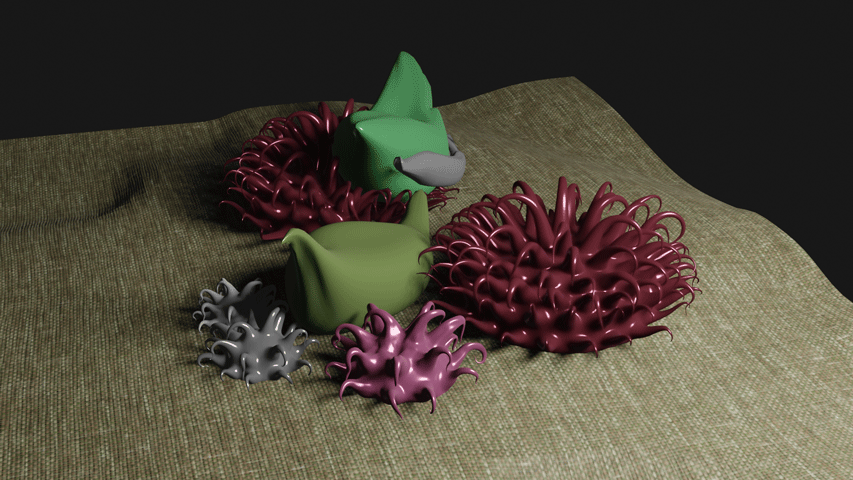
After the topology, comes the surface treatment. I'll unpack my adventure for any lessons it might afford.
Of the multitude of displays in the Blender cockpit, to the right of the screen is an editor window with fourteen modes. One of them treats material properties. Of course, there's nothing literal about this. What this set of controls deals with is a surface appearance that emulates the optical manifestation of materiality in meat space. Within this set lies twenty and more aspects of light reflection to dial into effect: surface color, subsurface color, surface roughness, sheen, clearcoat, metallic, anisotropic (which I barely understand), specular (ditto)...
SO... using monkey energy (my personal mode of figuring out new and complex experiences), I started toggling switches to manipulate the effect on my monad and the surface it sits on. After the initial waves of delight began to recede, I noticed that the results looked artificial, a regression from the initial black and white render after the topology was done. As all painters surrounding the epoch of Velasquez knew, there's more to color than a simplistic chromatic assignment.
To keep the monad from floating over a surface, I looked for ways to imbue more formal properties to the surface. By subdividing the plane into smaller mesh units, I could use Blender's sculpting workspace (one of ten, by the way) to drag a tool across the surface to make it emulate cloth, physically. Wrinkles, in other words. But the look was more desert dune than canvas.
SO... I found a fast way to project an image of cloth onto the surface below the monad. Credit to Andrew Price, an Aussie who owns Poliigon, a subscription service providing a wide array of photorealistic 3D assets. Price also runs an excellent YouTube channel called Blender Guru. Smart guy.
With the textile effect assigned, I realize that realism in Blender requires a tempered use of the saturated end of the color wheel. Looking around IRL, realize that colors around us are quite muted, moderated by a multitude of other light and color bouncing around at the same time.
Two problems persisted. The monad was still floating like an alien spaceship and the fabric image looked like an image. How to create fabric with warp and weave in topological formal terms?
In the Blender interface, the editor pane has a tab called "Modifier Properties". In Blender's Russian Doll design, clicking on the modifier button pulls up a pane containing around fifty operations that you can use to alter topology. By taking the plane, subdividing it into smaller gridded units, you can use what is called a "Laplacian Deform" function to assign a unitized topology to each cell of the plane. If the unit is a fragment of warp and woof, tiling them together smartly will render a piece of cloth for you.
All fine and good, but the number of elements, vertices+edges+faces, go sky high. Too much data. Long render times. Unwieldy.
SO... back I went to Andrew Price's solution, the fabric texture image projection. I reeled in the color saturation. I added and duplicated elements to create a primitive scene. In the these two images, monads and paint licks appear chalky. So, in the image at the top of this blog post, I dialed up the reflective aspects to emulate oil paint.
There's so much more to learn and apply. Multiple light sources. The way ambient light reflects surroundings off the objects in scene regardless of how shiny they are. Atmospheric particles like smoke or fog or dust motes.
Tip of the iceberg.
The Greatest Thing You'll Ever Learn
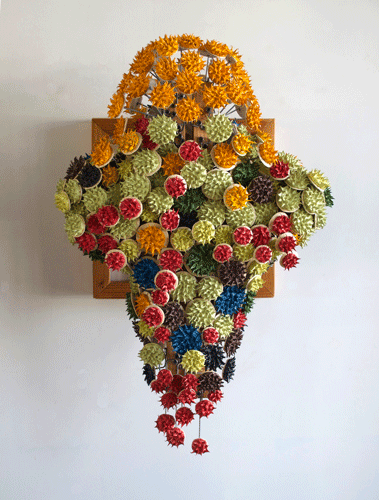
The Greatest Thing You'll Ever Learn
2020
#598
36" x 22" x 14"
Wood, Wire, Glue, Oil on Canvas
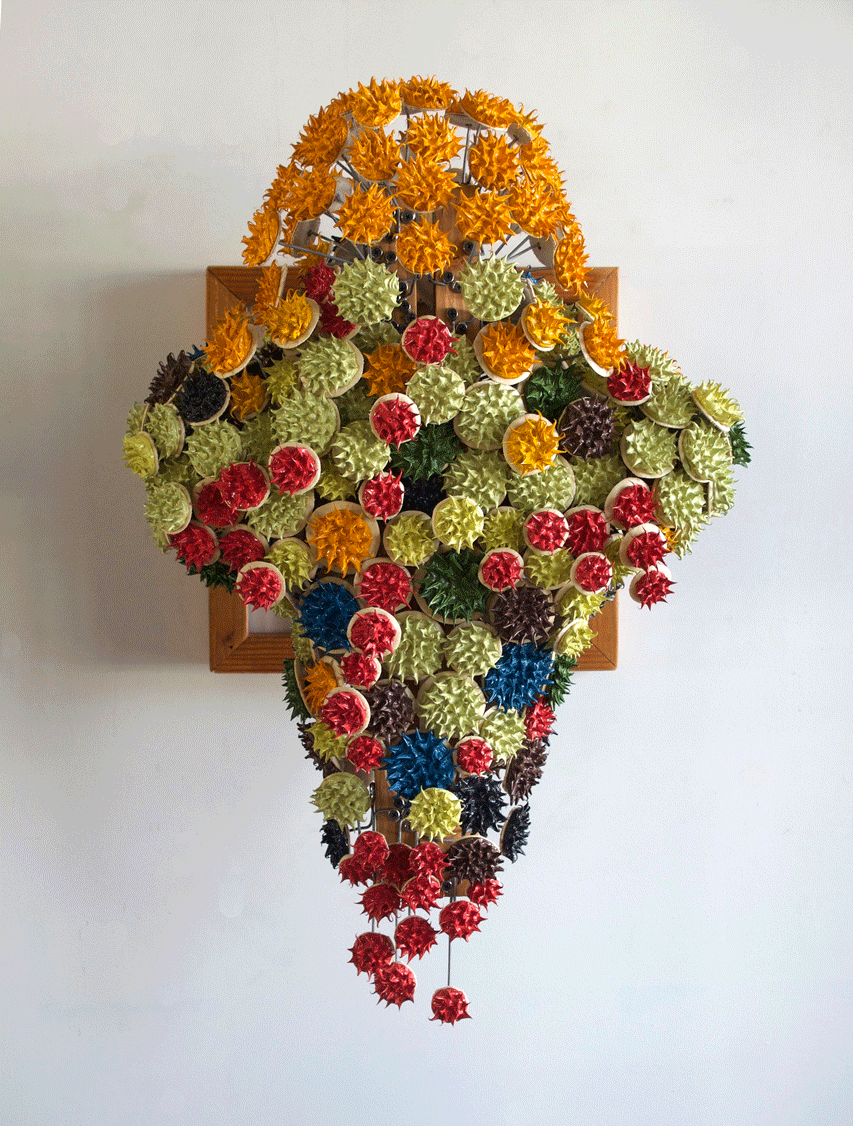
December 2, 2020
First Memory?
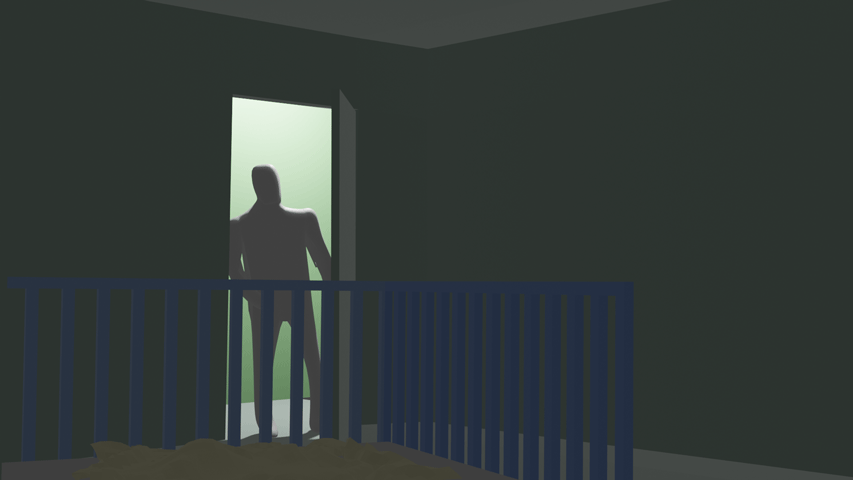
Memories, are they constructed or reverberations of an eye witness or both?
Sometime around high school, over a long period of time, a persistent image began to resolve in my mind. A blade of light suddenly streaming into the darkness. A silhouette. An interference pattern. I was upset, maybe hot. A hand on my belly and soothing sounds, maybe "ah... ah.... ah..."
Postscript:
There are a multitude of ways to render this memory. Pencil, paper, paint. But I wanted to have light flood into a room, and move a POV until the bars of a crib would screen as adjusted. I could have used SketchUp to model the room, but it was Blender that could position a light pouring element. I could adjust the intensity, bounce it off the walls. Blender has a function that imports an articulable figure, but my learning curve was too primitive for that. So I hammered out a form bluntly. A silhouette with light rounding curves was all I needed. The mission was a blunt as my use of the software, so all went well.
